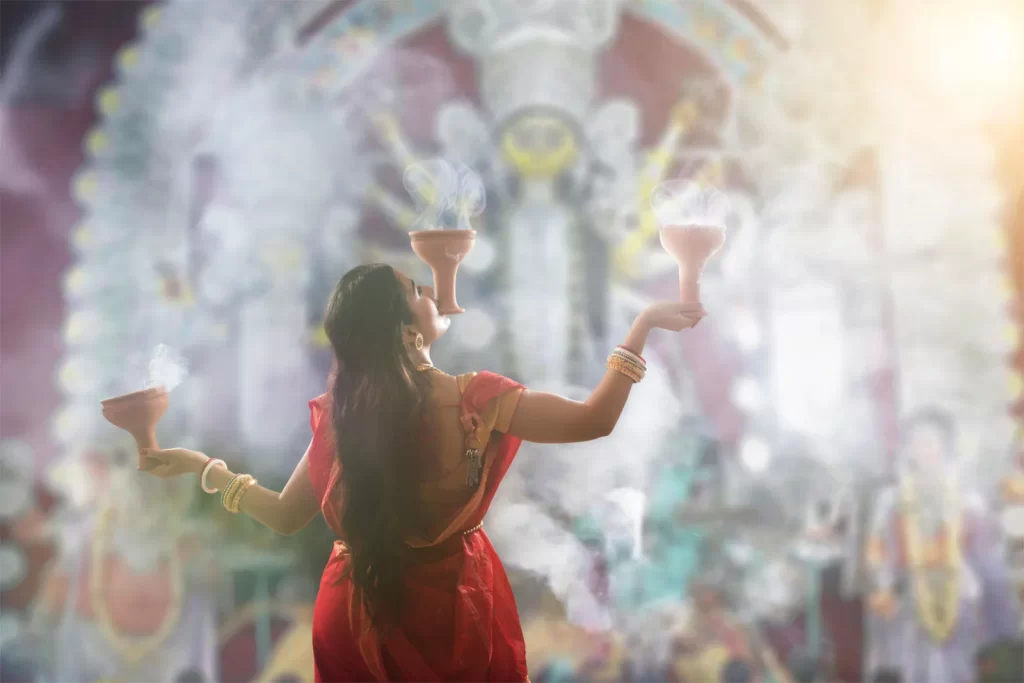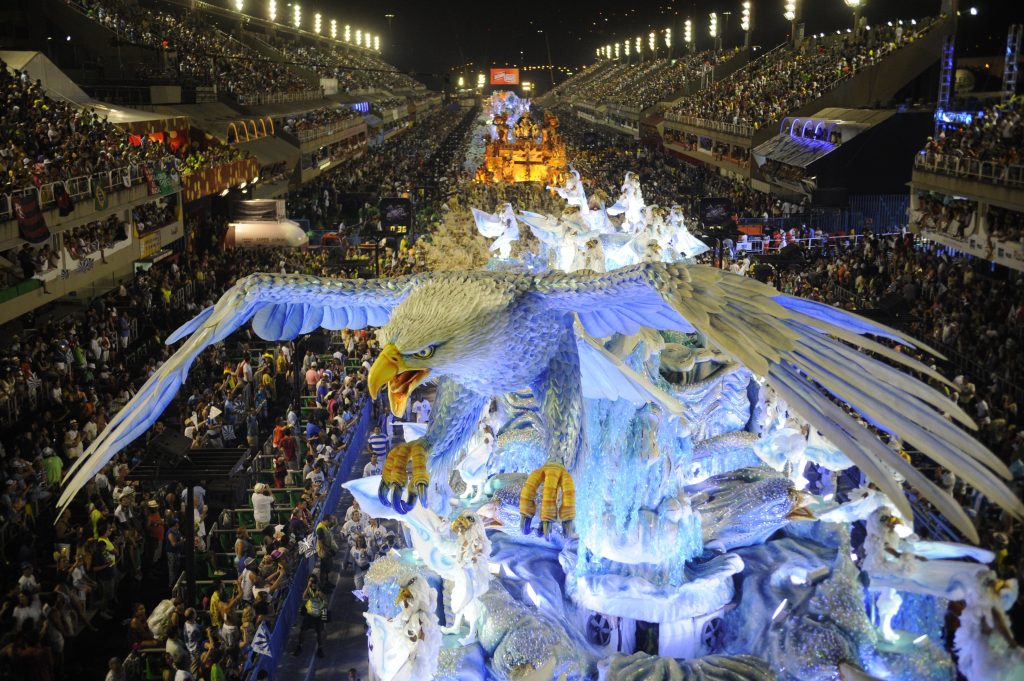Durga Puja in Kolkata achieved global recognition when UNESCO inscribed it on the Representative List of the Intangible Cultural Heritage of Humanity in 2021. This acknowledgment not only safeguarded a rich tradition but also amplified its global appeal, drawing more international tourists. Similarly, across the globe in Rio de Janeiro, Brazil’s world-renowned Carnival mirrors this celebration of human artistry. In 2024, Rio Carnival saw a staggering 156% increase in tourist spending compared to pre-Carnival times, reflecting both the resurgence of international travel and the festival’s growing global allure. This Guest Article by Ministry of Tourism’s senior official Arun Srivastava shows how both festivals stand as testament to the power of cultural heritage in driving tourism, employment and overall economic growth.
As the monsoon clouds bid adieu for the year, it’s the time for the season of festivities. While all the festivals falling under this auspicious period bring joy, togetherness and happiness among the people, one of the most distinct festivals, is the annual festival of Durga Puja. The worship of the goddess begins on the inaugural day of Mahalaya when eyes are painted onto the clay images to bring the goddess to life. It ends on the tenth day when the images are immersed in the river from where the clay came. Thus, the festival also signifies ‘home-coming’ or a seasonal return to one’s roots.
Durga Puja can easily be described as the best instance of the public performance of religion and art and as a thriving ground for collaborative artists and designers. The festival is characterized by large-scale installations and pavilions in urban areas, as well as by traditional Bengali drumming and veneration of the goddess. During the event, the divides of class, religion and ethnicities collapse as crowds of spectators walk around to admire the installations. In the months preceding the artisans sculpt the images of Maa Durga and her family in their small workshops. The sculpts are done using bamboo, dry hay and unfired alluvial clay which are taken from the rivers.

The celebration of Durga Puja is the testimony of human excellence in arts, crafts, music, and dance. During this time, masterfully designed clay models of the Goddess are worshipped in “pandals” or pavilions where communities get together and celebrate displaying the finest quality of artisans, designing and other elements ranging from the contemporary world to the modern times.
This amazing intangible heritage has been beautifully preserved by the Bengali communities for generations. The artists, craftsmen, dancers, composers, and singers start preparing for the festivals months in advance to bring out their best in terms of the thematic and innovative pandals across the country, especially in the City of Joy. In recent times, the scale and magnitude coupled with artistic marvel of this ten-day-long celebration has taken the world by surprise. UNESCO recognized this humungous effort put by the people in safeguarding this extraordinary Intangible cultural heritage and inscribed ‘Durga Puja in Kolkata’ on the Representative List of the Intangible Cultural Heritage of Humanity during its 16th session in 2021. This has helped in garnering international attention and increase in festivals global appeal, thus leading to an increase in foreign tourists.
Apart from this, Durga Puja attracts people from various parts of India. Many Bengalis living in other states or abroad return home to participate in the celebrations, leading to a surge in domestic tourism. During Durga Puja, tourist flow in Kolkata alone saw a spike of around 30-40%. According to the West Bengal Tourism Department, during the 2022 Durga Puja celebrations, more than 4 million people, including international tourists, visited Kolkata. Durga Puja has a multi-dimensional economic impact, creating direct & indirect employment opportunities and stimulating economic activities in various sectors.
The festival is estimated to boost retail sales in West Bengal by around 20-25%. Hotels, restaurants, and travel agencies experience higher bookings during the festival. In Kolkata, room occupancy in hotels often reaches nearly 100% during this time. Durga Puja accounts for approximately 30% of the total annual domestic tourists visiting Kolkata. In 2022, the West Bengal Tourism Department recorded nearly 4.2 million tourists during Durga Puja, which was a major recovery post-pandemic. If explored properly, Tour Operators across the country can make Durga Puja-centric tour packages which can include various aspects such as Pandal visits, Cuisine, Art, Culture, and Music along with historical and other sightseeing places.
Some 15,000 kilometres away from Kolkata is another place which celebrates the excellence of human artistry in the same fashion and is none other than the land of Samba. The Carnival in Rio de Janeiro is one of the grandest festivals in Brazil, with a rich history of more than 300 years. It is estimated that 2 million people celebrate this festival per day, making it the largest carnival in the world. It encompasses every avenue and alley of Rio, truly making it both a one-of-a-kind experience and a boost to economic activity.
Samba is a Brazilian music genre born in Rio de Janeiro. The Samba schools, on the other hand, are popular associations that promote samba by singing and dancing during Carnival. At the same time, the samba-enredo (samba-plot) is the song played by each samba school during the parades. During Rio Carnival, the samba schools perform in a procession (which we call a parade), telling a story sung through what we call a samba-plot, played by a group of musicians with various instruments known as the drum section. Rio’s samba schools maintain the fabulous traditions of old-time ancestors who have kept African music, arts and dance alive since the 8th century. According to many, the carnival is a meeting point of old traditions and modernistic ideas, which find their utmost expression in the carnival’s numerous elements.

The first samba school in Brazil, “Deixa Falar,” was founded in Rio de Janeiro in 1928. Therefore, samba schools and samba plots are considered a Carioca Cultural Heritage. The Special Group is Rio’s Carnival elite composed of 14 samba schools. Rio Carnival earned worldwide fame due to the parades of the Special Group samba schools. Competing schools of samba spend much of the year preparing for a 75-minute presentation that must include at least six floats to tell a story innovatively — while participants dance and sing, of course. Up to 4,000 members can take part in the parade of each of the 12 top-flight samba schools in Rio. The heart of the samba school is the drums section, with at least 200 people. As a form of reverence, the oldest members bring up the rear of an ensemble.
During my recent Rio visit, I got to see the Sambadrome Marquês de Sapucaí, the site of the annual Rio Carnival site. It was in 1984 when this annual festival was shifted to this 90,000-capacity sprawling arena consisting of a 700-metre stretch of Marquês de Sapucaí street converted into a permanent parade ground with grandstands built on either side for spectators. The venue is also occasionally used as a major concert venue in Rio de Janeiro.
According to a Master Cards report, during the 2024 Carnival, a 156% increase was noted in spending from tourists at restaurants, bars and grocery stores compared to the period before Carnival. This was a larger increase than the 107% in 2023 and the 76% in 2020. This trend is explained by the continued recovery in international travel following the pandemic and Rio Carnival’s increasing popularity abroad. Tourists are flocking to Rio in greater numbers, with the share of spending by international visitors increasing to 5.5% this year, compared to 5.1% in 2023 and 4.2% in 2020 during the Carnival period. The 2024 Rio Carnival revitalized the tourism sector economy which was battling post-pandemic revival and generated revenue to the tune of $1.84 billion, approximately a 10% increase from 2023.
One of the notable improvements is the increased adoption of Reused, Recycled and usage of environment friendly material while making floats and other display material for the parade, thus ensuring the sustainability.
While looking at these two examples of human excellence which are not only contributing immensely towards preservation of Intangible Cultural Heritage but also contributing towards the economic boost and creating much needed employment opportunities in the respective region. And of course, witnessing and participating at such places brings great joy and happiness too.
(The author is Arun Srivastava, Joint Director General, Ministry of Tourism, Govt. of India.)








